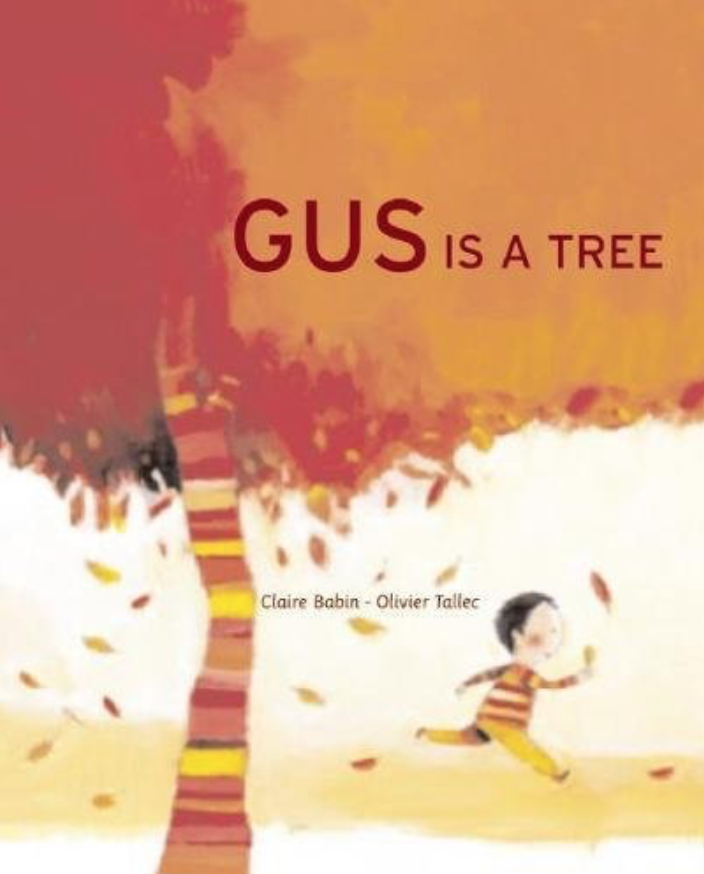Gus is a Tree
Book Module Navigation
Summary
The central question of Gus is a Tree concerns reality: What is reality? How do we distinguish reality from dreams?
Gus is a Tree tells the story of a boy who falls asleep underneath a tree in his school and dreams he is a tree. His dream seems so incredibly real that, while he is asleep, he believes he is a tree. When he wakes up, he realizes he is a boy.
Read aloud video by Sarah Sugay
Guidelines for Philosophical Discussion
Gus is a Tree deals with the philosophical concept of skepticism. The book tries to determine what reality is and what exists only in the boy’s imagination. In the book, Gus falls asleep under a tree, and in his dream he imagines that he is a tree himself.
Every child has a vivid imagination, and odds are they have experienced vivid dreams or imagined something that at the moment seemed real to them. You can try introducing the subject of skepticism to the children by tying it to the book by asking them how Gus knew what was real. When he was dreaming he was a tree, he thought that being a tree was reality; when he was awake, he thought being a boy was reality. How do you reconcile these seemingly opposing points of view? By asking the children to define reality and admit plausibility of doubting their senses, you are successfully introducing them to skepticism.
The concept of skepticism may be abstract, but you might ease into it with the first question set. The first question set is designed to ask the children to question what is real. Have they ever had a dream that seemed very real? The discussion of these questions is supposed to ease them into the more abstract questions about the meaning of reality. Can you ever be sure you are not really dreaming?
The following question sets attempt to make the children question reality and their senses, teaching them that reality is in fact very relative. If you dream a particularly vivid dream that seems to be the reality, how can you be sure that reality is not an incredibly real dream?
This is similar to Descartes’ Meditations on First Philosophy. The only thing you can know to be true is that you exist. Anything else you can logically doubt. A sound argument for doubting anything else can be created, but no matter how hard you try, you cannot make a valid or sound argument that argues that you don’t exist. This is a thing you must assume. The point of this lesson is mainly to get them to think about what they assume about reality. The children can learn this very abstract concept through the third set of questions. Does the fact that Gus thinks he can feel and sense things in his dream make his dream the new reality?
Finally there is the notion of what is real. Is what the senses can perceive reality? Is there any way to be absolutely sure of anything? Descartes argues that you really cannot trust your senses because they can be easily deceived. By doubting their senses, people learn to doubt everything in the world around them. It is, in fact, this doubt that convinces Descartes that the only thing he can be sure of is that he, in fact, exists. By asking students what they can and cannot trust, they will learn to question things. That is the main point of this book, to teach the children to question what they accept as facts.
Questions for Philosophical Discussion
Gus dreams that he is a tree, surrounded by many other trees.
- Have you ever had a dream that seemed so real you didn’t know you were dreaming?
- Can you remember if you could feel things in your dreams?
- Did you know you were dreaming?
- How did you come to know it was just a dream?
- Is there any way to know you are dreaming before you wake up?
Gus remembers the walks he had with his father in the forest.
- Is there a difference between imagining and dreaming?
- Can the things you imagine seem real?
- Does your imagination affect what is going on around you?
Addressing questions of reality
- How do you know what is real?
- Can you trust that what other people tell you is real actually is?
- Has there ever been a time in which you thought you saw something, but you really didn’t? How about an example of a deception?
- Can you trust your senses?
Original questions and guidelines for philosophical discussion by Andrea Abudayeh. Edited June 2020 by The Janet Prindle Institute for Ethics.
Find tips for leading a philosophical discussion on our Resources page.






